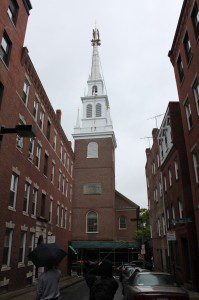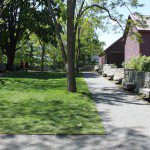Cathy and I visited three churches on our recent trip to Boston. Though none of them were thousand year old cathedrals, they were all fascinating places and quite old, at least by American standards.
The Old North Church (properly known as Christ Church) is best known as the signaling point that began the famous midnight ride of Paul Revere (and also of William Dawes and Samuel Prescott). It was built in 1723 as an Anglican church and became an Episcopal church after the Revolution. Though it serves primarily as a historical site, it remains an active church with a regular congregation and services.
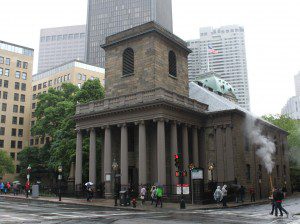
King’s Chapel was founded in 1686 as an Anglican church and the current building was opened in 1754. It became Unitarian in 1785. Today it is a Christian church using a modified Anglican liturgy, but it is a member of the Unitarian Universalist Association.
First Parish Cambridge was founded in 1632 as a congregationalist church and the current building was opened in 1833. It became Unitarian in 1829 and is an active UU congregation. Cathy and I attended the Sunday service at First Parish and the order of service was quite familiar.
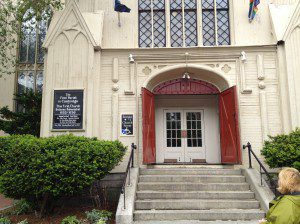
All three of these churches have box pews (although First Parish has them only on the sides and has standard pews in the center sections), something I had never encountered before. Apparently, churches had no regular seating until the Protestant reformation, when the advent of the sermon as the central point of the service made it necessary. Box pews allowed allowed families to sit together in a regular spot and provided shelter from cold drafts. Box pews were typically purchased or rented by families and the cost could be substantial, particularly for boxes in prime locations. According to the docent, in the colonial period the Old North Church was a “closed” church – if you didn’t own a box, you couldn’t attend.
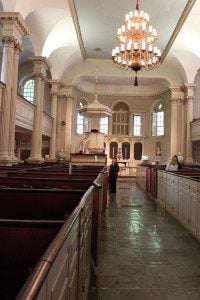
Although some on the religious right like to claim the United States was founded as a Christian nation, church attendance and membership was quite low in the Revolutionary period. Box pews and pew rentals no doubt played a part in that trend.
Architecture has a huge effect on worship experience, and an architecture or a geometry that is well-suited to one situation may be a poor choice for another. The traditional Wiccan circle works very well for small intimate functions, but if you have more than about 30 people it becomes sub-optimal, and if you have a large public gathering (like a Pagan Pride Day) it approaches being unworkable.
Box pews served a purpose, but that purpose turned out to be at odds with the general mission of the church. They began to be removed in the mid 19th century and today they remain only as historical artifacts.
Are there box pews in your spiritual life? Are there walls that separate you from others in your religion? Are there traditions – perhaps pretty, comfortable traditions – that close you off from people who are different in one way or another? Are there gates that keep out those who would come in, if only they could?
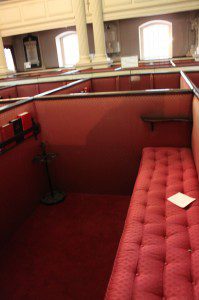
The liberal religions (which include virtually all forms of Paganism) are not proselytizing religions – we have no desire to convert the whole world to our ways. But there are plenty of folks who need what we have. They feel the call of the old gods and goddesses. They feel the call of Nature and the spirits of Nature. They feel the call of magic, of the alchemy that refines not base metals but human souls.
Do we welcome them? Do we have a place for them? Do we help them find their way to Druidry or Heathenry or Humanistic Paganism or whatever flavor they’re best suited for?
Or do we close ourselves off in our box pews and let them fend for themselves?
Box pews – whether physical or metaphorical – are best left as artifacts of the early Protestant era. Let’s not import them into Paganism.


